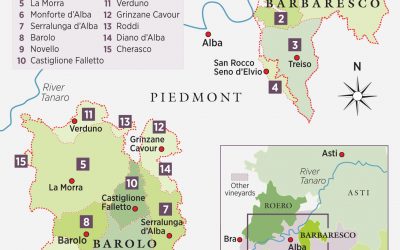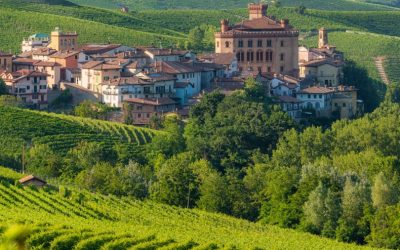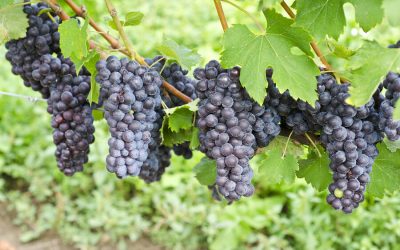Grappa di Barolo vs Grappa di Moscato
Grappa is a celebrated Italian brandy produced from pomace, the remnants of grapes after winemaking. Among the plethora of grappa varieties, Grappa di Barolo and Grappa di Moscato hold prominent positions due to their unique characteristics derived from the noble Nebbiolo and aromatic Muscat grapes respectively. This article will delve into the origins, production, and tasting profiles of these two popular grappa types, allowing you to make an informed choice the next time you’re exploring the world of grappa.
Gigi Rosso Wines | Grappa di Barolo vs Grappa di Moscato
Grappa di Barolo, as the name suggests, is derived from the pomace of Nebbiolo grapes used in the making of the world-renowned Barolo wine. The significance of Nebbiolo grapes cannot be overstated, especially the 2016 vintage from Barolo, which is praised for its ideal weather conditions and resultant high-quality grapes. The Barolo grappa captures the essence of this outstanding vintage, presenting a robust, complex spirit with a distinctive amber hue, particularly when aged in wooden barrels. The flavors can be quite intense, featuring a rich medley of red fruit, spice, and occasional nuances of chocolate and coffee.
Continuing with the exploration of these distinguished grappa varieties, we should discuss the lighter, more delicate counterpart to Grappa di Barolo – the Grappa di Moscato. It is made from the fragrant Muscat grape pomace, which lends an unmistakable aromatic quality to the grappa. Its clear color and floral bouquet are characteristic of the Muscat grape, presenting a palate rich in fresh grape, rose, and citrus flavors. This spirit’s sweetness provides a delightful contrast to the robustness of the Barolo grappa, yet the high alcohol content remains consistent, highlighting the potent nature of these Italian spirits.

Grappa di Barolo is a type of grappa made from the pomace of Nebbiolo grapes, which are used to produce the famed Barolo wine. It is often aged in wood, giving it a distinctive amber color and adding layers of complexity to its flavor and aroma profiles. This grappa is known for its robust character, with flavors of red fruit, spice, and sometimes even hints of chocolate and coffee. Its high alcohol content (typically around 40-50% ABV) makes it a strong and warming spirit, perfect for sipping after a meal.
On the other hand, Grappa di Moscato is made from the pomace of Muscat grapes. This grappa is generally clear in color and showcases the aromatic and floral qualities of the Muscat grape. It is generally lighter and more delicate than Grappa di Barolo, with a characteristic sweetness and flavors of fresh grape, rose, and citrus. Despite its lighter style, it also has a high alcohol content similar to that of Grappa di Barolo.
| Grappa di Barolo | Grappa di Moscato | |
|---|---|---|
| Grape Variety | Nebbiolo | Moscato |
| Typical Aromas | Red fruit, spice, chocolate, coffee | Fresh grape, rose, citrus |
| Color | Amber (if aged in wood) | Clear |
| Alcohol Content | 40-50% ABV | 40-50% ABV |
| Characteristics | Robust and complex | Light and aromatic |
The Roots of Grappa: Tracing the History of Barolo and Moscato
Both Grappa di Barolo and Grappa di Moscato have deep-seated origins in Italian viticulture. Grappa is a brandy produced from pomace, the leftover skins, seeds, and stalks from the winemaking process. Barolo, made from Nebbiolo grapes, and Moscato, made from Muscat grapes, both offer unique qualities in their grappa forms due to the distinct characteristics of these grape varieties.
From Vine to Bottle: The Production of Grappa di Barolo and Grappa di Moscato
The production of both Barolo and Moscato grappa involves a process called distillation, where the fermented pomace is heated to produce alcohol vapor, which is then cooled and condensed into liquid form. The resulting grappa is typically aged in wooden casks to develop more complex flavors. Grappa di Barolo, distilled from the pomace of Nebbiolo grapes used to produce Barolo wine, typically has a more robust, tannic profile, while Grappa di Moscato, made from the pomace of aromatic Muscat grapes, often features lighter, floral notes.
Tasting the Difference: The Unique Profiles of Barolo and Moscato Grappas
On tasting, Grappa di Barolo is typically rich and robust, often with notes of dried fruit, spices, and sometimes a hint of tobacco or leather. It is well-rounded and persistent on the palate, reflecting the hearty nature of Nebbiolo grapes. On the other hand, Grappa di Moscato tends to be fresher and more aromatic, often with fragrant notes of fresh grapes, rose petals, and tropical fruits. It is typically softer, more mellow, and more approachable in comparison to its Barolo counterpart.
Conclusion: “Choosing Your Grappa: Barolo vs Moscato”
Whether you opt for the robust and complex Grappa di Barolo or the fragrant and mellow Grappa di Moscato depends largely on your personal palate and preferences. Both offer an authentic taste of Italian tradition and craftsmanship, albeit with distinctly different sensory experiences. Hopefully, this comparison has shed light on the unique qualities of each, helping you appreciate the rich diversity that grappa has to offer.




